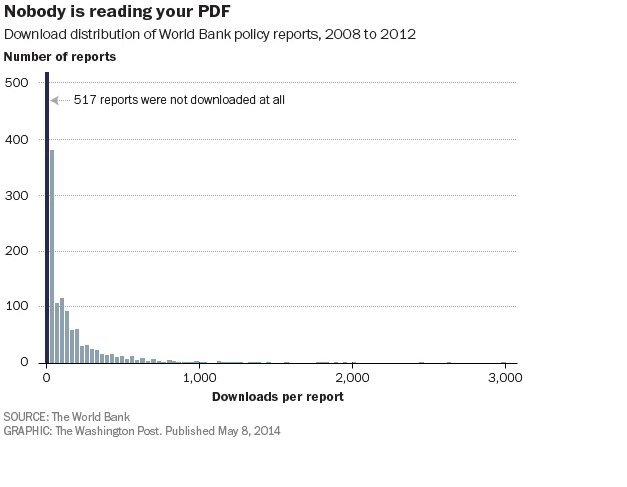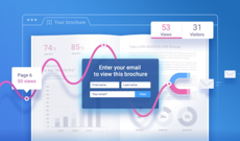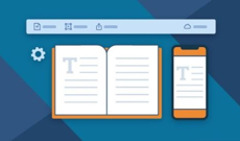PDFs were invented at the beginning of the 1990s, and they are still the main method of storing and presenting data. Many catalogs, brochures, and documents are presented as PDFs.
How do we get knowledge to our clients? By sending them PDFs, of course. How do we store large guides and textbooks? As PDFs, naturally. We all are used to dealing with this format, which is a familiar, reliable source of information.
What Working with PDFs is Like
First, let's look at how different industries work with PDFs every day and the pros and cons of dealing with this format.
Marketers and sales reps use PDFs for sales collateral, including case studies, brochures, presentations, white papers, and business proposals. They print them out and refer to them when meeting face-to-face with clients or send the materials by email.
Manufacturers often have many of their product catalogs as PDFs. Such catalogs can be very large, up to or surpassing 300 or 400 pages. They send them to dealers or put the files on their websites so clients can download them.
Educational institutions also have many of their materials as PDFs. They usually upload textbooks and learning materials to their websites for students to read and download.
Sooner or later everyone in these scenarios, whether they are sales reps working in the field, manufacturers, or students, face similar problems:
- When they print out all the PDFs they need, they often find themselves carrying around heavy piles of materials.
- In today's fast world, a simple PDF, access to which depends on the internet connection, feels obsolete. Sales reps, who often work in places with poor internet connection, have to wait for PDFs to load. This can interfere with meetings and even affect their results.
- Static PDFs don't have very good quality and appearance on the web. It's hard to read them. People have problems viewing PDFs in different browsers and on various devices, and finding specific information in a big document is even harder.
- Updating PDFs wastes time and effort. By their nature, PDFs are not editable. You have to convert them to Word, for example, to make changes. Because of this, the information often goes stale. As a result, salespeople, manufacturers and their clients end up with outdated information.
- Last but not least, the marketers can't receive any analytical data about their PDFs, such as client behavior when reading the document (e.g., what they read, what they skip, and what information is the most popular)
Are PDFs the Best Choice?
As you can see, in our digital era, people who work with PDFs face many problems. This leads them to start thinking about new ways to present all their data.
Patrick Biddiscombe, the CEO of New Breed Marketing, a premier inbound marketing and sales agency, says in an article about sales collateral: "If you still have case studies that are PDFs, you're missing out. Install analytics on your case study pages and use various marketing agency tools to see what is relevant to your buyers."
Studies support the idea that PDFs are not the best choice for storing knowledge and data anymore. For instance, the World Bank, which invests about one-quarter of its budget in knowledge-product services, recently conducted a study to see if anyone was still reading their PDFs. The results were not encouraging for institutions that still save all their data as PDFs.

Which Format Should We Choose to Present Data?
Your catalogs, brochures, and documents contain valuable information, and it is natural that you strive to present them in the best possible way.
First of all, don't worry. You can use PDFs if they suit your needs. They are still one of the most popular formats. People trust them, and they're secure, proven over time, and easy to create.
You can also make ebooks for clients who like to read materials on their readers. They can read your information on the way to work without worrying about their internet connection or download speeds. This is a comfortable way to get important information and knowledge, especially for students.
Try for free





